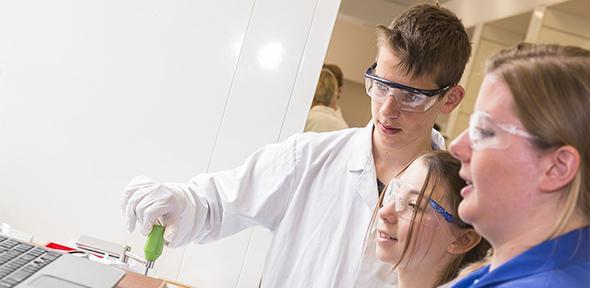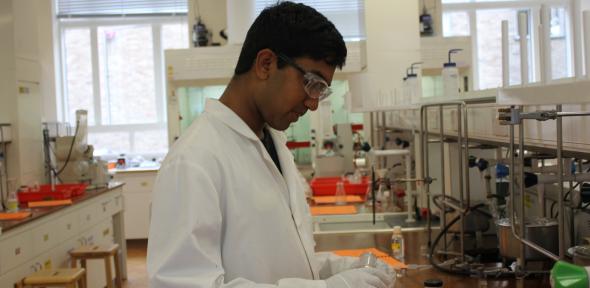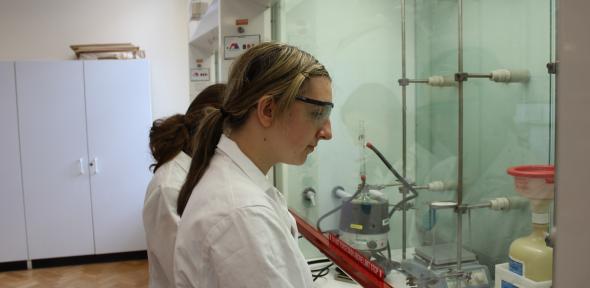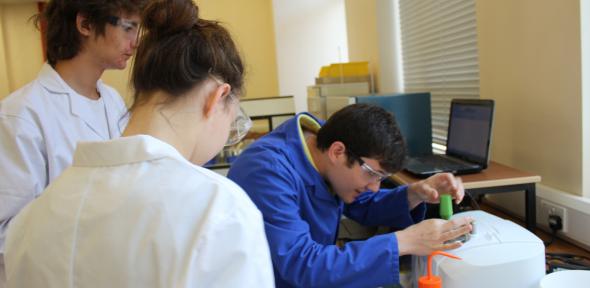
University of Cambridge, photographer Nathan Pitt
120 fifteen-year-olds from schools across the UK recently took over the department's teaching lab to conduct university level experiments.
Raiyyan Ismail, a student from King Edward VI Camp Hill School for Boys in Birmingham, said:
“At school, we’re normally all doing the same experiment but there are lots of things going on here and you have to work things out for yourself. I was surprised by how quickly I got the hang of using the equipment. Earlier we made a clock using chemical reactions and later, we’re working on the chemistry of paint, which sounds really interesting.”

Raiyyan Ismail at work in the lab
Kate Southam, a student at The Appleton School in Benfleet said:
“The lab is much bigger than at school. It’s nice to work with people from other schools and we get to use more dangerous chemicals here, and really expensive equipment.”

Kate Southam
At the end of an action-packed session in the lab, the Campers enjoy a varied social programme including opportunities to explore other parts of the University and town.
Salters’ Camps will be held at six universities throughout the UK this year. The first Camps were held in 1998, since when around 9,500 students have taken part. Each Camp hosts fifty or sixty 15-year-olds from a variety of schools across the country.
The Salters’ Company is one of the Great Twelve City of London Livery Companies and was founded in 1394 to regulate and represent the medieval trade in salt. The Company’s activities today are centred on charitable and educational giving.
The Company's flagship charity, The Salters' Institute (est. 1918) promotes the appreciation of chemistry and related sciences among young people and encourages careers in the teaching of chemistry and in the UK chemical and allied industries.
Cambridge is committed to widening participation both at the University itself and in higher education more generally. In 2013-14, the collegiate University delivered 4,000 access events which led to almost 200,000 interactions with young people and their teachers.
The text of this article has been adapted under the creative commons licensing agreement from an article which first appeared on the University of Cambridge website.
